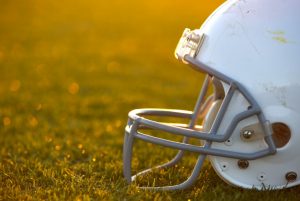 The frequency in which concussions occur in the National Football League (NFL) is an issue of concern. In the March issue of the American Journal of Sports Medicine, authors Michael Clark, Breton Asken, et al. explore the relationship between concussions and the mechanisms by which they occur. The authors state that although there is a significant amount of information regarding the prevalence of concussions in the NFL, there isn’t as much about the manner of those occurrences.
The frequency in which concussions occur in the National Football League (NFL) is an issue of concern. In the March issue of the American Journal of Sports Medicine, authors Michael Clark, Breton Asken, et al. explore the relationship between concussions and the mechanisms by which they occur. The authors state that although there is a significant amount of information regarding the prevalence of concussions in the NFL, there isn’t as much about the manner of those occurrences.
Below we compiled pertinent statistics mentioned in the AJSM article. Also other relevant found data, and the findings that Clark, Asken, et al. provide in their compelling conclusion.
- From 1945 to 1999, there were 497 reported deaths directly resulting from football participation.
- Between 1965 and 1974, the highest number of football related fatalities occurred; 36 out of the 167 brain injuries happened in 1968 alone. These fatalities led to a rule prohibiting dangerous tackling techniques. A safety standard for football helmets was also implemented by the National Operating Committee on Standards of Athletic Equipment.
- Concussions are a concern in every contact sport. However, football accounts for the highest proportion of these sports related injuries.
- A concussion is reported almost every other game in the NFL. Also a substantial portion of football concussions have historically been under-diagnosed and under-reported.
- In 2007, and again in 2009, the NFL implemented a revised concussion management policy. Since 2009, several rule revisions have been introduced to address goals of player protection:
- In 2010, 2011, and 2012, language regarding defenseless receivers was broadened. Helmet to helmet contact was strictly prohibited and violent players were subject to fines.
- In 2011, the kickoff line was moved up by 5 yards to reduce the number kick returns. The running start was reduced by 5 yards in hopes of decreasing the force of collision.
- In 2013, crown of the head impacts were also made illegal.
- Starting in 2009, any player with the common symptoms of a concussion was to be withheld from play until fully asymptomatic and cleared by both his team physician and an independent neurologist consultant.
- Starting in 2011, independent certified athletic trainers began to watch from the press box for possible injuries during the game.
- In 2013, an NFL PA mandated that a neurotraumatologist consultant should be on the sideline of every game to evaluate players with suspected concussion. They required that the neurotramatologist be unaffiliated with the NFL to avoid any collusion.
- More concussions happen in the second half of play. Fatigue most likely causes the players to neglect proper technique. The risk of concussion increases by about 24% in in the second half of a game.
- Just up to 2013, nearly 5,000 former NFL players brought lawsuits against the NFL for concussion-related injuries.
- One of the most common issues is chronic traumatic encephalopathy (CTE). CTE is a degenerative disease caused by repetitive blows to the head. Frequently CTE is found in professional football players as well as boxers, wrestlers, rugby players, and other participants in contact sports.
- As of 2016, 90 out of 94 former NFL players that underwent an autopsy were diagnosed with CTE.
 In an attempt to combat the frequency of concussions, the NFL implemented concussion management policies, and changed rules to place greater emphasis on penalizing players for aggressive behavior. However, there is still an urgent need to further strengthen policies and introduce concussion prevention and management programs.
In an attempt to combat the frequency of concussions, the NFL implemented concussion management policies, and changed rules to place greater emphasis on penalizing players for aggressive behavior. However, there is still an urgent need to further strengthen policies and introduce concussion prevention and management programs.
The AJSM authors conclude their article with: “In-game concussions in the NFL occurred through a diverse variety of mechanisms, surprisingly tended to be well-anticipated, and, also surprisingly, occurred with <10 yards of closing distance. The impacts causing concussion were broadly distributed over the helmet.” While there is more and more research regarding concussions in the NFL, there is obviously still much more to be done. Safety in sports is extremely important, and those who participate in contact sports should be extra vigilant. Learn more about safety and concussions in an earlier Orthopaedic specialists blog here.
For more information about concussions or other sports injuries, Dr. Stacie Grossfeld and Orthopaedic Specialists are here to help. For an appointment with a board certified orthopedic surgeon and sports medicine doctor in Louisville, Kentucky, call 502-212-2663 today!

Recent Comments